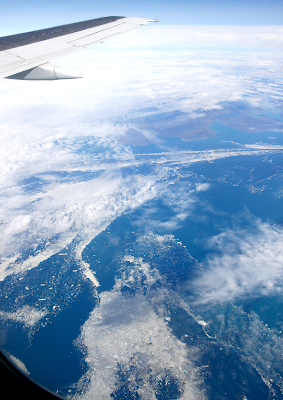We braved the wet and cold on this fine day to head out in search of fossil plants along the Kitsilano foreshore.
And find them we did! 40 million-year-old pretty as you please plant fossils
The Kitsilano fossil plant sites are intriguing as they hold a mystery... why ONLY plants and NO animal fossils? Nary an insect, mammal or reptile to be found.
We did find some truly lovely plant fossils that speak to a warmer, wetter environment than the Kitsilano we know today.
Andy shared that the sediments that lay on the foreshore along Kitsilano Beach are thought to be from the Upper Eocene / Early Oligocene in age (38 to 28 million years old), although opinion varies on the exact age with some folk thinking they may be as much as 40 million-years-old.
The rocks here are layered in stacks of sand, silt and mudstones associated with a lowland estuarine or deltaic environment. If you look closely, you can see signs of the water meandering into channels and ponds of still water.The area would have formed a basin, surrounded by mountains that were drained by rivers into this area. It seems that there are no indications of any marine incursions in the sediment pile, and so the area is assumed to have remained stable for some time.
Plant fossils are common in these beds and are often well preserved. The most common are broadleaved deciduous species such as beech, oak, chestnut and hazel, although several coniferous species are known including redwoods (Sequoia), larch, pine and spruce. The deciduous trees like low, moist landscapes which fit with the basin model. The coniferous species likely lived on the surrounding hills where the ground was somewhat drier and their remains transported by rivers into the depositional basin.
There are also regular signs of burning in the fossils – indicating some kind of forest fire events that must have occurred with some frequency.
You will want to catch his wonderfully engaging interviews. Andy is a professional geologist living in Vancouver who is tailoring his career to bring change to the minerals exploration industry.Since 2014, he has established his consulting business, SGDS Hive, which takes on graduate geoscientists and mentors them through a variety of exploration projects to help engage and educate the next generation of geologists.
Andy is the engine behind Below BC, a non-profit society that provides outreach to the public around Earth Science topics, which now serves several thousand people in British Columbia each year.
His love of geology and palaeontology started early. Andy is a wealth of knowledge on fossil plants. Growing up on the Isle of Wight, he studied plants that are remarkably similar to those we looked at today—and he is a natural behind the lens!
We were blessed to have David, Andy's partner, teacher & botany buff, along with their two palaeo puppers — Daisy & Dobby — to complete our escort.
With Andy's guidance, everyone found fossil material and learned a lot about how these fossils were originally laid down in a river system.
A huge thank you to Gabriel Mesquita our talented cinematographer! It was a cold, wet day and the entire crew were troopers. If you are planning to visit the Kitsilano foreshore to look for fossils, know that the stairwell access at the base of Dunbar/Alma Street has been washed away.
You'll want to head to Waterloo Street and make your way to the beach on the rather steep stairwell found there. Surface collecting is fine at this site. Wear rubber boots and know that the rock is very slippery.

.jpg)




.jpg)









%20Fram%20Formation%20of%20Nunavut,%20Canada.%20The%20genus%20contains%20a%20single%20species,%20Q.%20wakei,%20known%20from%20a%20partial%20skele.png)

.png)


.jpg)














